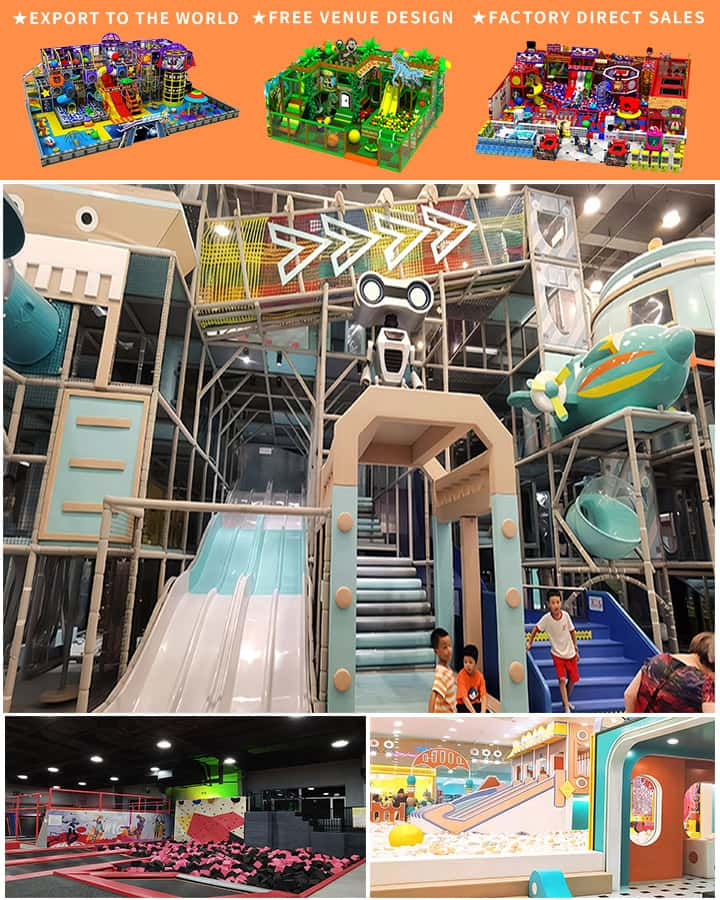When it comes to keeping children engaged, active, and entertained, indoor playground equipment stands out as a fantastic solution. Unlike outdoor parks that depend on weather conditions, indoor playgrounds offer year-round fun and developmental benefits in a controlled environment. Selecting the right equipment can make all the difference in ensuring kids have a safe and enjoyable experience. Here’s a comprehensive guide to choosing the best indoor playground equipment for your needs.
Safety First: Non-Negotiable
Safety is paramount when it comes to children’s activities. Always start by checking for safety certifications from reputable organizations. Look for materials that are non-toxic, lead-free, and free from harmful chemicals. Ensure the equipment is age-appropriate and has features like soft landing surfaces, padded edges, and secure structures to prevent injuries. Regular maintenance checks should also be conducted to keep the equipment in top condition.
Types of Indoor Playground Equipment
- Climbing Structures
Climbing walls, ropes, and ladders are excellent for developing motor skills, balance, and coordination. They come in various designs, from simple wall-mounted structures to elaborate multi-level climbing towers.
- Slides
Slides are a staple in any playground and provide endless fun for children of all ages. Options include straight slides, spiral slides, and wave slides. Some modern slides even incorporate interactive elements like lights and sounds.

- Trampolines
Trampolines not only provide bouncing fun but also help improve cardiovascular fitness and strengthen leg muscles. Make sure to choose trampolines with safety nets and padded frames to prevent accidents.
- Ball Pools
Ball pits and pools are ideal for younger children and offer a sensory-rich experience. They encourage imaginative play and can be themed around various settings like sea creatures or colorful balls.
- Interactive Play Equipment
Modern indoor playgrounds often feature interactive elements such as touch screens, motion sensors, and virtual reality setups. These additions stimulate cognitive development and add an educational twist to physical play.
- Obstacle Courses
Creating obstacle courses with tunnels, balance beams, and hurdles can challenge children’s agility and problem-solving skills. These are particularly popular in larger indoor playground settings.
Age Appropriateness: Tailoring to Different Age Groups
It’s crucial to consider the age range of the children who will be using the indoor playground. Toddlers may enjoy soft play areas with foam blocks and low climbing structures, while older kids might prefer more challenging equipment like tall climbing walls and complex obstacle courses. A good mix of equipment catering to different age groups can ensure that all children have a great experience.
Space Considerations: Maximizing Your Indoor Area
The available space significantly influences the type and amount of equipment you can install. For smaller areas, modular and compact units that can be easily adjusted or moved are ideal. Larger spaces allow for more extensive setups, including multi-level playsets and combined units that offer various forms of play in one area.
Budgeting: Making Cost-Effective Choices
While high-quality equipment can be a significant investment, it’s essential to strike a balance between cost and quality. Opt for durable materials that withstand heavy use over time to avoid frequent replacements. It’s also worth considering multipurpose units that serve multiple functions, thereby offering better value for money.
Final Thoughts
Selecting the right indoor playground equipment requires thoughtful consideration of safety, type of play structures, age appropriateness, space utilization, and budget. When done correctly, these elements combine to create a vibrant, engaging environment where children can learn, grow, and most importantly, have fun. Investing in high-quality indoor playground equipment not only enriches children’s lives but also provides peace of mind for parents and caregivers.




